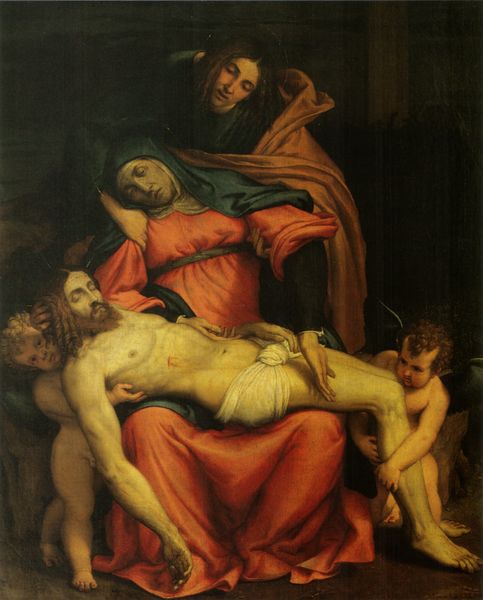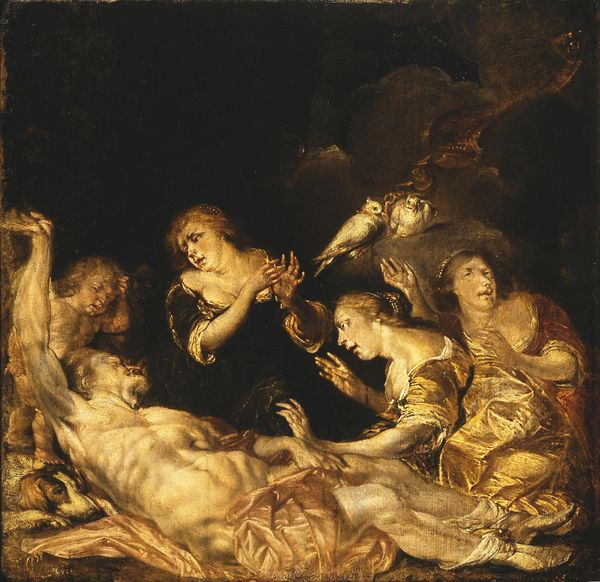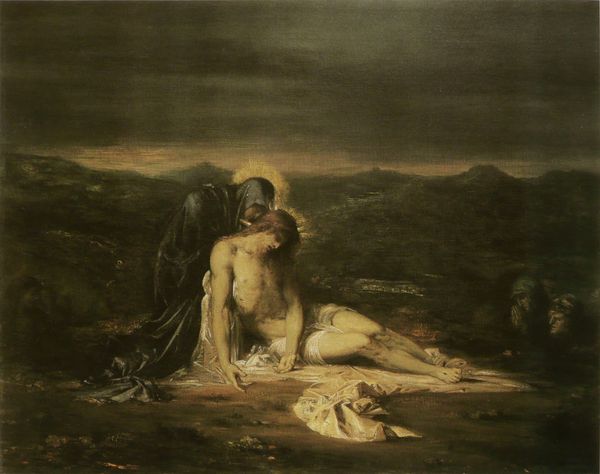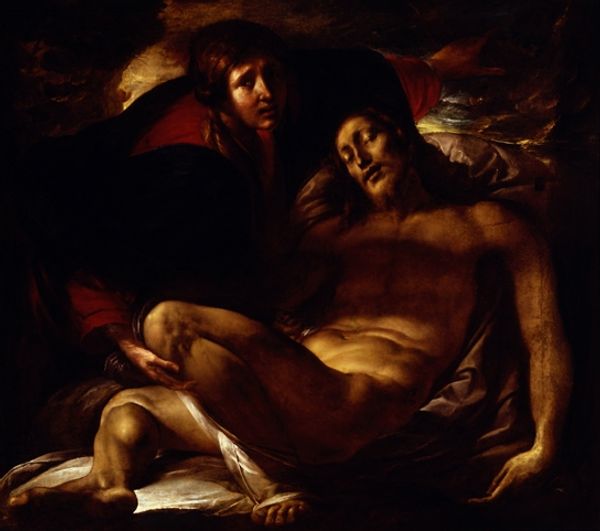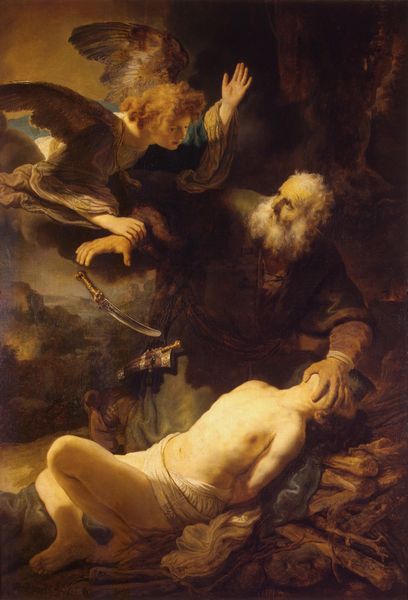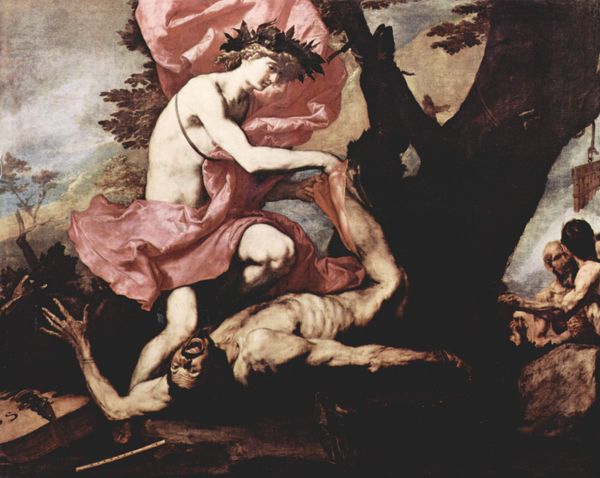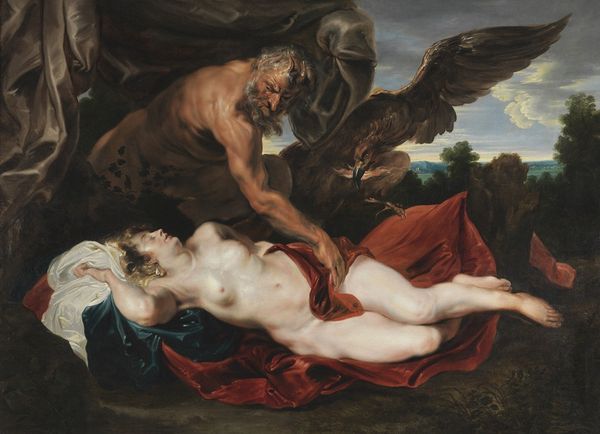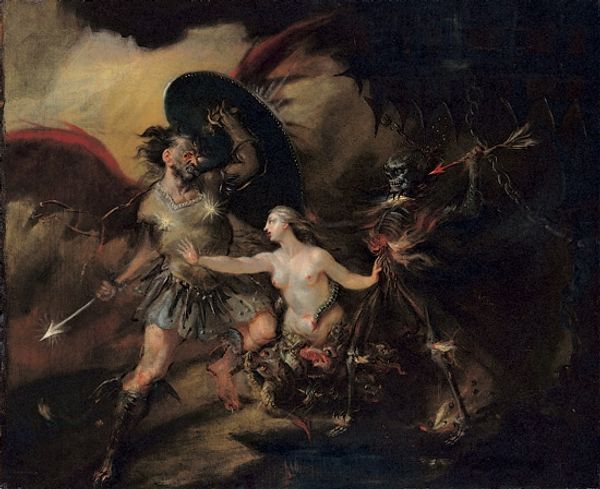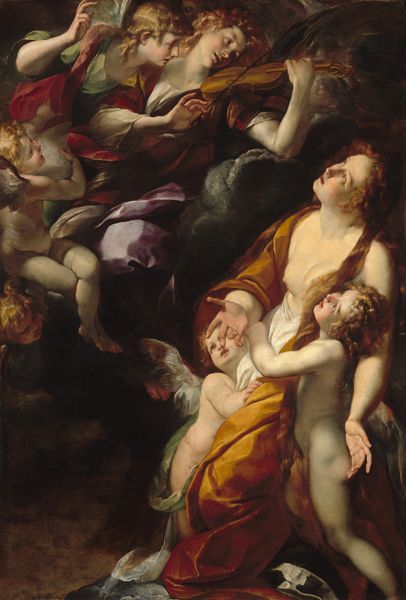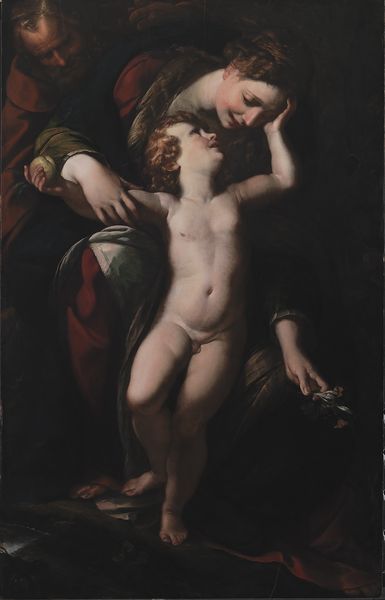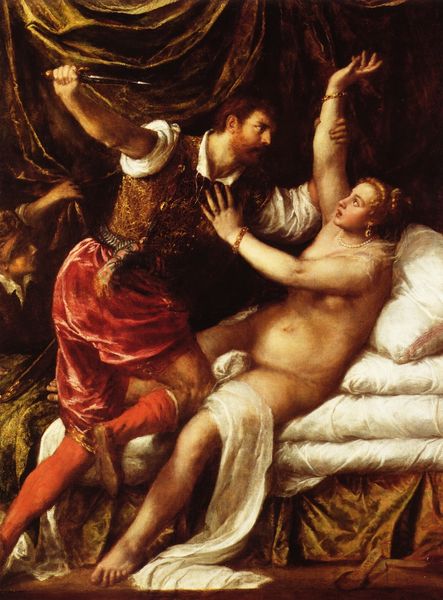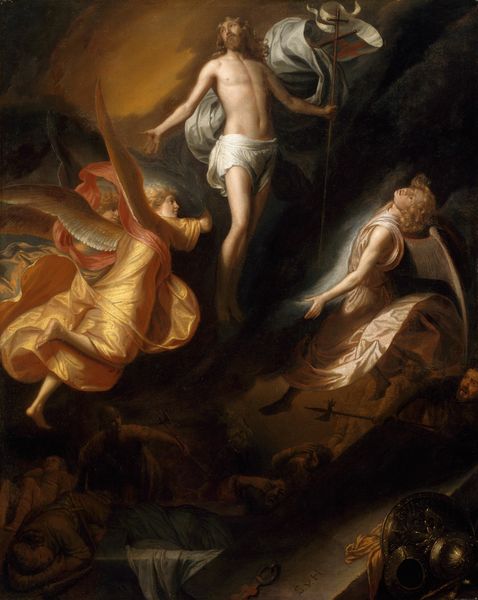
painting, oil-paint
#
allegory
#
painting
#
oil-paint
#
figuration
#
oil painting
#
female-nude
#
child
#
romanticism
#
history-painting
#
nude
#
male-nude
Dimensions: 40 x 49 3/4 in. (101.6 x 126.4 cm)
Copyright: Public Domain
Curator: This painting, executed in oil around 1796, is titled *The Night-Hag Visiting Lapland Witches*. It comes to us from the hand of Henry Fuseli. What’s your immediate take on this? Editor: It feels intensely unsettling. The color palette is murky, but the pale figures emerge with a kind of lurid glow. It hints at something truly horrific unfolding. Curator: Indeed. The subject matter here draws heavily from contemporary beliefs about witchcraft, infused with Romantic-era anxieties. Fuseli positions the hag figure, almost a monstrous wet nurse, as a symbol of corrupted maternal power. This speaks volumes about how anxieties surrounding female agency were framed during this era. Editor: Visually, the hag dominates with her sheer size and muscularity. The figures in the background and around the child create a very specific iconographic symbolism of demonic ritual—the chalice shape behind her head like some kind of ghastly halo. Curator: I would agree with you, but note how it contrasts sharply with the limp vulnerability of the child, further emphasizing this theme of exploited innocence. Also consider Fuseli’s engagement with discourses around race and colonialism; he evokes an ‘exotic’ and ‘primitive’ landscape in Lapland as the site for these unspeakable acts, reinforcing problematic societal hierarchies. Editor: It certainly positions the story within a long tradition of depicting pagan practices, and associating the periphery with chaos and ritual magic. Those witch figures certainly reinforce this impression of wild energy unleashed at the very margins of society. Curator: Ultimately, this work encourages a discussion about the construction of otherness, power, and the anxieties underpinning late 18th-century European identity formation. Editor: It’s a deeply layered work where unsettling images resonate with symbols we can explore endlessly, as they hold up cultural memory from that time period.
Comments
No comments
Be the first to comment and join the conversation on the ultimate creative platform.
